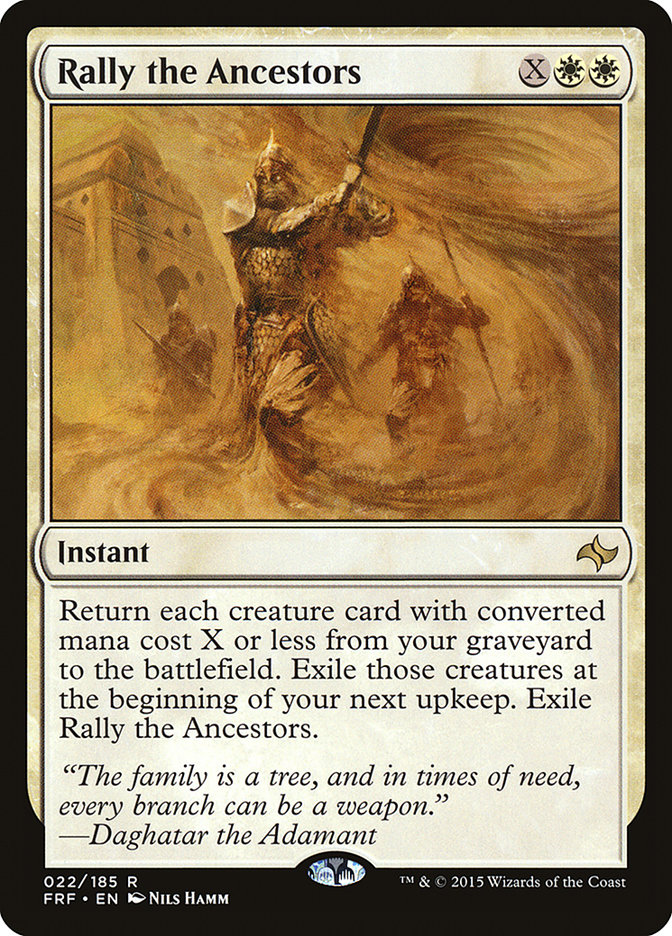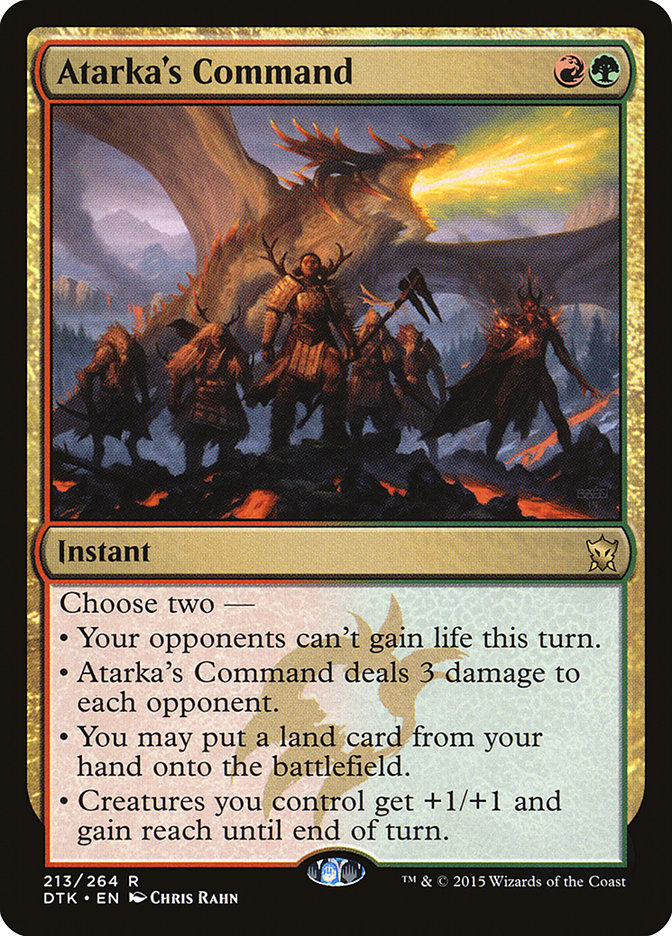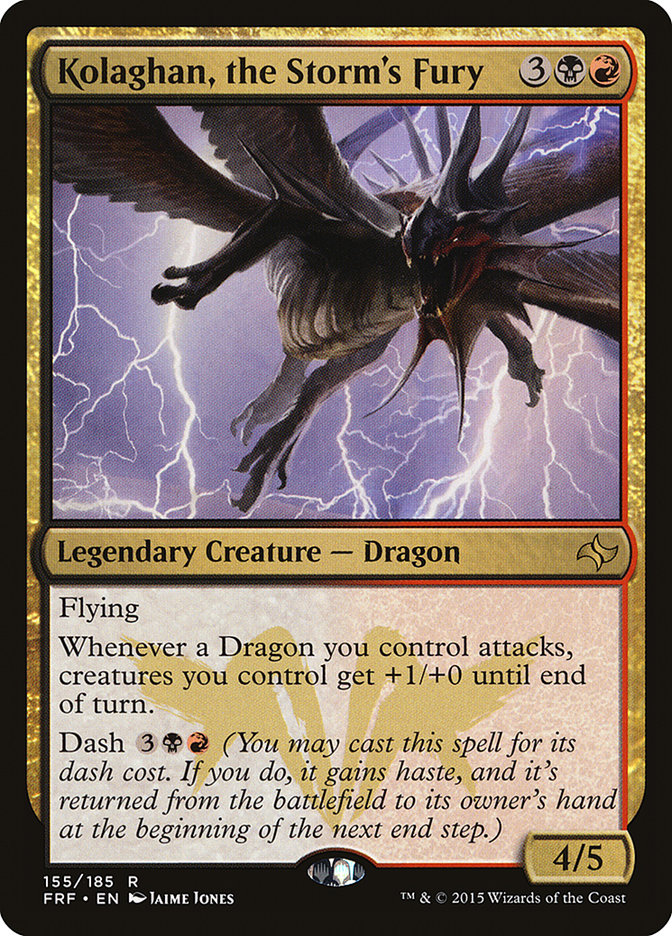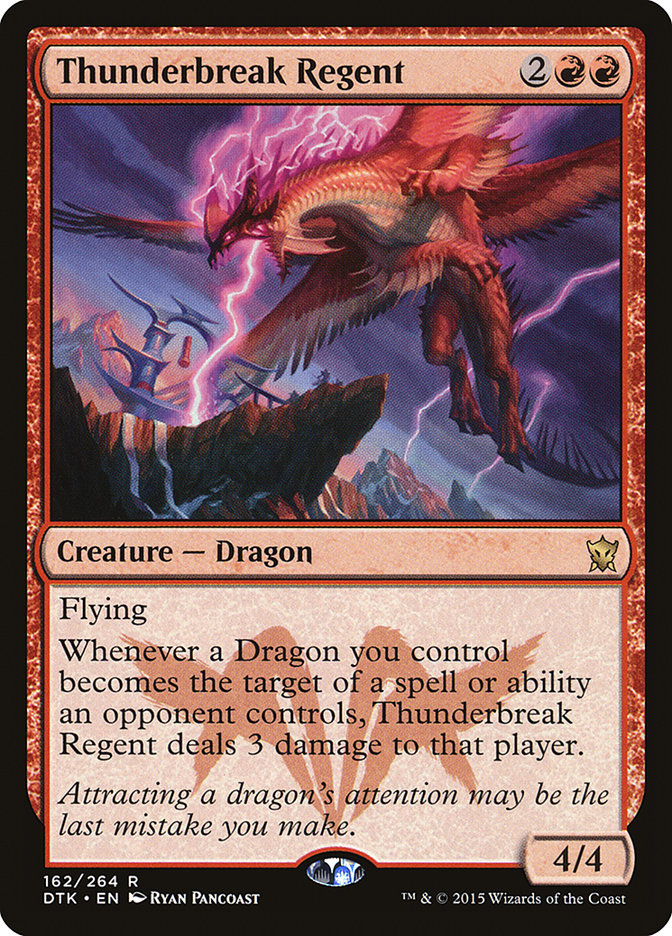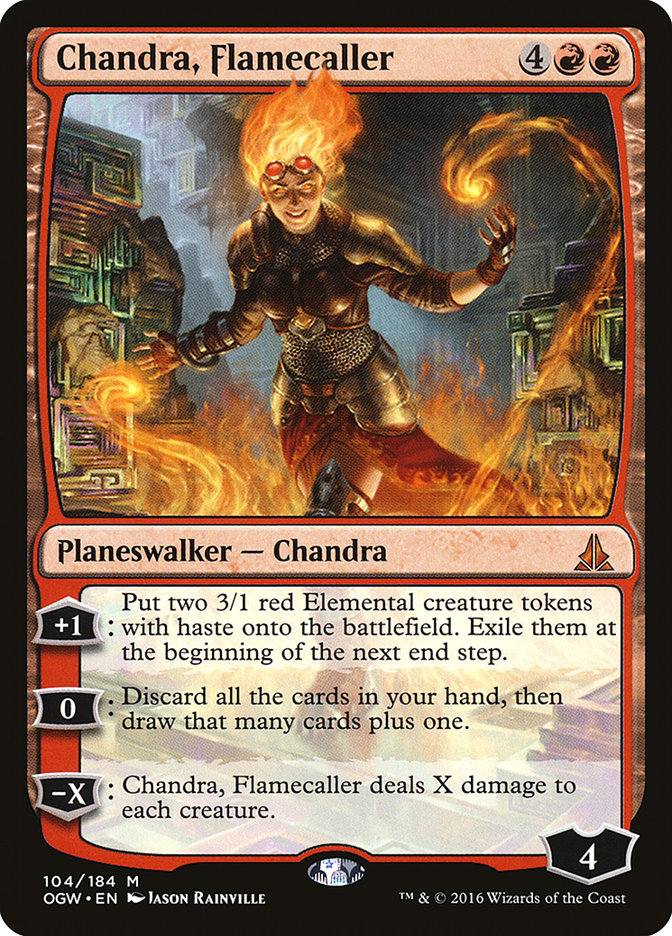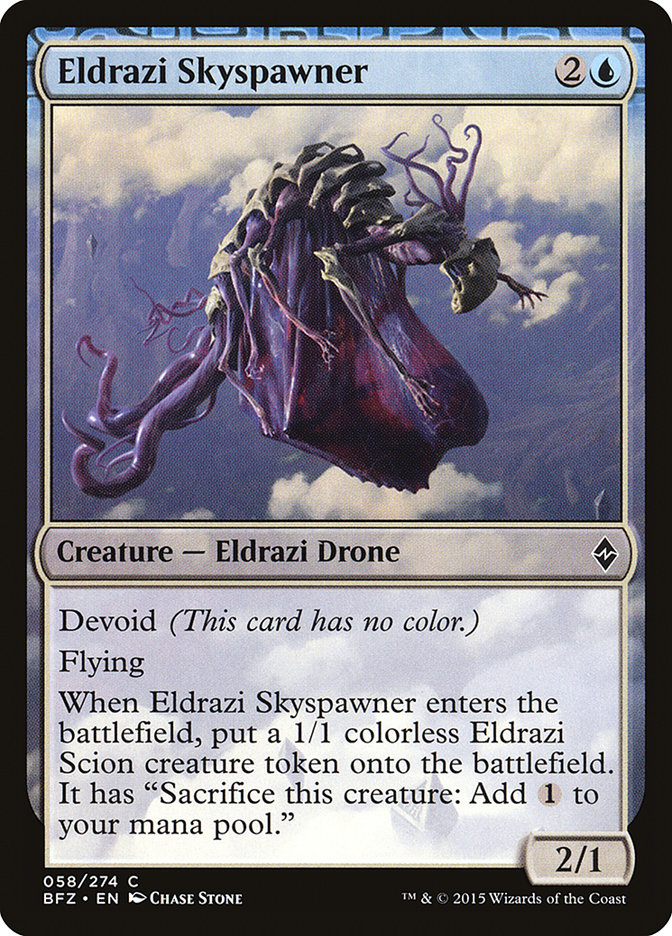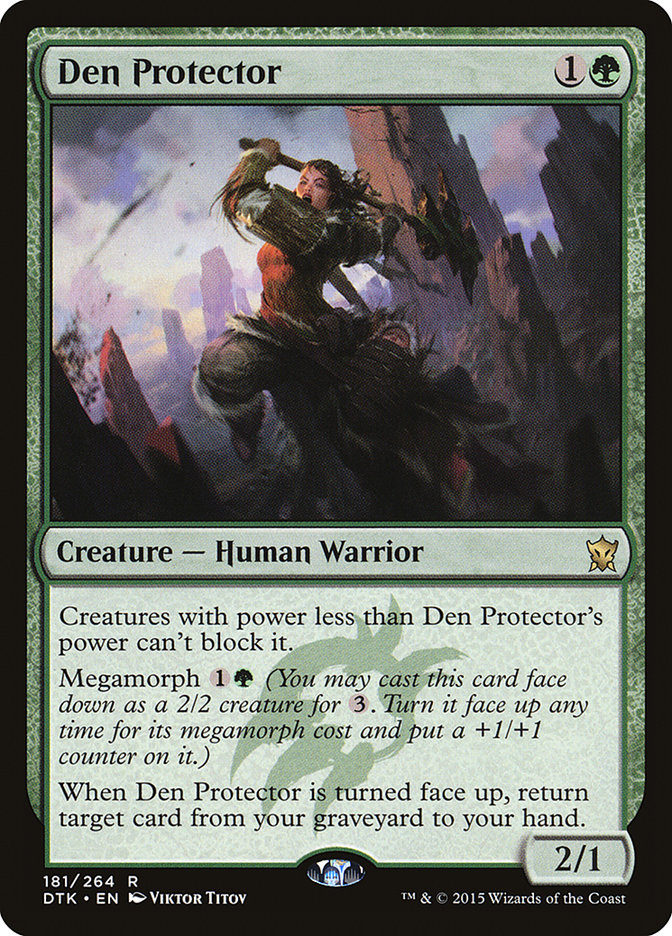The first obvious thing to consider was the potential of a higher-than-normal showing of Four-Color Rally and likely small numbers of Atarka Red. Even if everyone in the room thought this way, that still doesn’t mean Atarka Red would be a good choice, given how rough the Four-Color Rally matchup can be. Maybe a few brave souls might “sleeve up” Monastery Swiftspear, but not enough to make that much of a consideration.
The next big question to ask was how many people would show up with Crackling Doom. Jeskai Black and Mardu Green are both powerful strategies that are highly played at Grand Prix and on The SCG Tour® but not often piloted by the Platinum players. It took a watchful eye to see this trend, but it’s one I have noticed over the past few months. Not to say no one would play the deck, but I expected it to be less played than most of the other options.
Broad-strokes metagaming against the Platinum-level players showed their love for boring old Abzan Aggro, Four-Color Rally, and Esper Dragons. Abzan Aggro might be one of the duller choices, but its uneventfulness doesn’t translate into uneffectiveness. It’s still a very powerful deck that I expected a decent number of players to pick up for the event. All of this could point toward Esper Dragons as a decent choice, but it’d be a risky one if players didn’t do exactly what I thought they would, and I for one knew I wouldn’t be the smartest person in this room. It couldn’t have been that easy.
I kicked off testing right where I left off prior to #PTOGW with R/B Dragons. This deck was a well-kept secret for a long time and finally broke into the limelight with Tom Ross’s semifinal finish at #SCGCOL. Now, even though I wrote about how powerful this deck might end up being, I never actually played any games with it. I thought it was a perfect time to fix that and ran headfirst into some Magic Online events with the draconic duo of Thunderbreak Regent and Kolaghan, the Storm’s Fury.
Creatures (21)
- 4 Kolaghan, the Storm's Fury
- 3 Flamewake Phoenix
- 4 Thunderbreak Regent
- 2 Pia and Kiran Nalaar
- 4 Hangarback Walker
- 4 Thopter Engineer
Lands (26)
Spells (13)

It didn’t take long to realize how medium the deck actually is. Now I know it’s powerful and does something unique in the format, but it didn’t stand out as the best thing I could be doing. I won many games where I curved out or killed everything that moved, while losing when I got stuck on three lands or flooded out on lands and removal spells. The deck was as clunky as I thought it would be, but not as explosive and powerful as I once imagined. It also felt like a deck I could pick up prior to the event and function with it about as well as I would if I spent the week testing the deck. It was time to continue the exploration.
I picked up a version of Jeskai Black that Gerry Thompson and Michael Majors had been working on. I haven’t been a fan of the deck ever since I played it at the #SCGPC, but I knew my biased attitude against the deck wouldn’t help me in my pursuit for finding the best deck for the weekend. Early in testing I discovered how much better the deck had gotten with the inclusion of both Kalitas, Traitor of Ghet and Chandra, Flamecaller. These cards give the deck the inevitability it was always looking for. I was extremely impressed with both of them in the deck. I only had one problem with the deck.
I wasn’t good enough to play it.
It might sound strange to hear that, but it is true. Sure, I was winning games with the deck, but it always felt as if I was just playing cards without a true understanding of how I was going to win the game.
This was disconcerting, since one of the reasons why I do so well in Constructed is understanding how the games should be playing out and when I need to take drastic measures when I feel I am loosing whatever battle I am fighting with my opponent. With Jeskai Black I just felt like I was casting spells and hoping mine were better than my opponent’s. I guess you can say this deck didn’t play to my strengths, since I am much better at knowing how to beat this deck than winning with it.
I felt defeated at this point and started considering playing Abzan Aggro. This deck isn’t bad, but it isn’t good either. I consider Abzan Aggro to be the safe choice when nothing else feels right, but I never expect to win an event with the deck. It preys on variance to win a high enough number of matches and is a deck everyone in this event will be extremely familiar with.
I would be going into the event considering myself “dead money” with this deck, which is why I wanted to take one more stab at finding something better before accepting this fate. I decided to try Andy Ferguson’s Bant Company deck.
Creatures (25)
- 1 Warden of the First Tree
- 4 Den Protector
- 4 Deathmist Raptor
- 4 Jace, Vryn's Prodigy
- 4 Bounding Krasis
- 4 Reflector Mage
- 4 Sylvan Advocate
Lands (25)
Spells (10)
Sideboard

Surprisingly, the deck was performing very well out of the gates. I was winning most of my matches with the deck without changing a single card from his finalist appearance list from #SCGCOL. I wasn’t the only one falling for Andy’s brainchild either. I spotted many of the players qualified for the MOCS Playoff Event giving the deck a try, as well as numerous people just playing online. I realized I wasn’t going to have anything special by playing this deck and would have to figure out if I could break the mirror as well as make the Four-Color Rally matchup better. The only problem was that I couldn’t think of anything.
That was until I played the mirror against someone who had Eldrazi Skyspawner in their deck. I knew I was dead the moment it hit the battlefield off of a turn 4 Collected Company.
The mirror match is very tempo-based, which is why it is difficult to break serve on the draw, since you have to get combat in on the ground. Both decks play many creatures, so the first attack is almost always from whoever went first; thus, it’s more difficult to get damage in on the draw, thanks to a lower life total and a fear of potential tempo-based creatures causing an even bigger deficit to make up.
Having flying creatures changes the entire dynamic of the matchup, since it now forces the opponent to become more aggressive thanks to the aerial assault. You can simply sit back and defend the ground while a 2/1 flier does all the work.
I know this was the perfect technology for the MOCS and began working on a version of Bant Company that played more fliers. Wingmate Roc was an obvious inclusion, since it is so powerful against other green-based decks. It also gave Bant Company a chance to steal games against Four-Color Rally thanks to being able to play it on turn 4 off the Eldrazi Scion from Eldrazi Skyspawner. I finalized my list with the inclusion of nine flying creatures and felt extremely confident going into the MOCS.
Creatures (28)
- 2 Wingmate Roc
- 2 Stratus Dancer
- 3 Den Protector
- 4 Deathmist Raptor
- 3 Jace, Vryn's Prodigy
- 2 Bounding Krasis
- 4 Eldrazi Skyspawner
- 4 Reflector Mage
- 4 Sylvan Advocate
Lands (25)
Spells (7)

The final numbers I choose are much different from what others are currently playing. For instance, I only play three Jace, Vryn’s Prodigy and Den Protector. I replaced them with maindeck Stratus Dancers. Jace, Vryn’s Prodigy is a great card in this deck, but not one you have to lean on that heavily as other decks that play the card must. You don’t cast that many spells, making its flip-side much weaker, but it is an extremely powerful card to put onto the battlefield off of Collected Company, since you will be able to Flashback the namesake card the following turn. Jace, Vryn’s Prodigy on turn 2 is mostly used to smooth out the draw while discarding Deathmist Raptors.
Cutting a Den Protector is suspect at first glance. It’s obviously a powerful card this deck wants, but it isn’t something you always have time for and often not a great card to find off Collected Company. The format has sped up significantly thanks the the tempo advantage of Reflector Mage. Three toughness is the new “small,” making the 2/1 body of a Collected Company Den Protector almost useless.
That isn’t the case for Stratus Dancer. This flier was oftentimes mediocre, but the format has sped up to a perfect place for this card. It’s a great two-drop as well as a late-game insurance plan against Collected Company, Rally the Ancestors, and one of the many removal spells that are constantly being cast. I was so amazed at how well this little creature was performing that I almost played an entire set of the card. Prior to this deck, I deemed it unplayable. How things change!
Eldrazi Skyspawner plays a very important role in this deck, even though it has yet to be seen in it. It’s good for the reasons I’ve previously stated but also for many others that take some playing to figure out. One of the strongest things about the card is how important the extra mana on the following turn can be. Sometimes the fourth land is nowhere to be seen and the Eldrazi Scion allows you to still cast Collected Company. In other situations, the fifth mana on turn 4 allows for Wingmate Roc or a Morph with the threat of unmorphing it. Sometimes you just cast Eldrazi Skyspawner on turn 4 as well as another two-drop. This deck loves a tempo advantage and Eldrazi Skyspawner is another card that can give it one.
The MOCS Playoff Event almost went according to plan. I started off 4-0 after crushing everyone in my path. I took a quick loss to Mono-Green Eldrazi, which sucked but was expected, since I went into the event knowing my bad matchups would be Ramp and R/B Dragons. I then proceeded to beat Matt Sperling in the mirror and take two quick games off Yuuya Watanabe playing Jeskai Black when he was the last undefeated player in the tournament.
I went into the Top 8 at 6-1, but unluckily got paired against the same person who beat me earlier in the event, and the second verse was the same as the first. He smashed me in two not-so-close games and my tournament was over. After seeing the rest of the Top 8, I feel that I would have been able to beat anyone else left in the event. Those are the breaks though.
I’ve done very well in Standard for the past few years, but very rarely do I feel that I have the best deck in the room going into a tournament and the event doesn’t eventually change my mind. The last time I felt this favored in a tournament was when I played Abzan Control with Fleecemane Lions in the sideboard over a year ago.
It sucks to have not finished with a qualification, but the silver lining is that I figured out (with the help of Andy Ferguson and a random opponent who bashed me) one of the most powerful decks in the format. I highly recommend giving this deck a spin or at least preparing to play against it if you are planning on playing in a Regional PTQ this weekend.
Changes will of course need to be made, but I do not know at this time what those would be. I built the deck for a specific metagame that no longer exists. All I know is that this shell is one of the most powerful things you can be doing right now in Standard and should become one of the best decks in the format.


